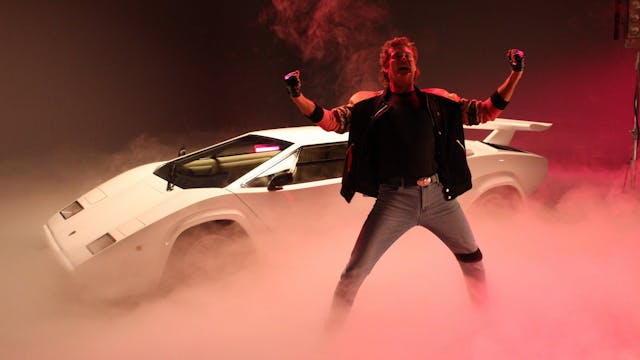3 movies that defined the Countach’s ’80s allure
Lamborghini wouldn’t be reviving a nameplate so held dear by supercar geeks without recognizing the wake left by the original. The announcement and reception of the born-again Countach has been widespread, though it’s simply an answer to an undercurrent of demand that has grown from the Countach’s status as one of the original supercars. Though it debuted just a few years before the decade began, Lamborghini’s space-age design would come to define much of the 1980s, setting the mark for the likes of the Testarossa and even the wild Vector W8s that came later. The effects of its presence in television and movies cannot be understated: The subliminal effect of being a hero and villain’s chariot cemented the Countach’s legacy for generations to come.
The Cannonball Run (1981)
The Cannonball Run, both the 1981 original and the ’84 sequel, knew their target demographics and knew how to hook them as the 1980s opened to a new era of speed, space, and technology. Based on the likenesses of Cannonballers Donna Mae Mims and Peggy Niemcek, though trading their Porta Potty–annihilating limousine for a jet-black 1979 Countach LP400S in the film adaptation, the intro scene has been acid-etched into the minds of fans every decade since. So much so that in the sequel, writer and director Hal Needham saw little need to add anything on the next go-around, and the opening scene played out with much of the same recipe: a screaming V-12, wide-open desert highway, and an excuse to run.
Few films burnished the Countach’s sex appeal, or at least the fantasy of it, as precisely as this on-screen celebration of speed did. Nothing represented the peak of romantic excess like the most over-the-top supercar the world had seen yet, frwring, CB antenna array, and a dozen tailpipes aside. NACA ducts dominated the quarters underneath the gulping intakes and delta-shaped rear wing, a visual representation of everything the real Cannonball Run—the rejection of what Brock Yates saw as a growing nanny-state of the road—stood for, even if movie fans were unwise to the flick’s actual roots.
The Wolf of Wall Street (2013)
The life of Jordan Belfort was one worthy of a Hollywood script, as the rather creative investment broker’s fraudster’s legacy was defined by extravagance and the craving to keep it funded at any price—prison time, even. Financial schemsters like him relied on the presence and facade of excessive purchases to flaunt the appearance of their success, pumping and dumping their own reputations just as they did the pennystocks they shilled to gullible investors. With his firm, Oakmont Stratton, Belfort built an army of salesmen under the motto that their target would buy or die. His alpha dominance over his “Strattonites” was fueled by the front of success he projected with the lifestyle so well capsulated in The Wolf of Wall Street‘s Quaalude cruise. The white-on-white 1989 Countach used in the film was a legitimate 25th Anniversary Edition too, a detail lost on no one who cringes every time it clashes fenders with other vehicles in an exhibition of excess worthy of its own.
At the dawn of the supercar era, it became clear that the Countach’s weight as a status symbol would only increase. The boom and bust of the American economy throughout the 1980s, with the rapid growth of the investment industry, meant that wealth concentrated in the pocketbooks of those who would be satisfied with only the wildest, most exotic machines. Belfort did own a Countach too, along with its crosstown rival, the Ferrari Testarossa.
Kung Fury
As the result of many of these other films, the Countach’s position as an icon had been long embodied by posters hung from youthful walls by 2015. Kung Fury is a retro-wave themed short film (we’ll give a pass here on its digital release) that combines what’s best described as a dream of the ’80s, crossing between rock opera and sci-fi action, with nods to everything from Karate Kid to David Hasselhoff’s own Knight Rider.
By 2015, when Kung Fury debuted, the wedge-shaped Lambos that are so revered in it were largely erased from the roads. Even though the veneer had worn off, shows like Top Gear made no qualms about how impractical the Countach was and how shoddy some elements of its construction could be. By the twenty-tens, the Countach faced few challengers as the representative ride of the bygone ’80s era. The Miura is credited as the first supercar by many, but it still holds little street cred compared to the Countach’s overdrawn styling. Where imported European cars were traditionally known for their flowing, elegant lines that contrasted to the monolithic appeal of our own hardware here in the United States, the Countach responded with almost cartoonish proportions for its vents, wings, and raked profile. As the window of nostalgia has moved past mid-century interests, enthusiasm surrounding wedged supercars has grown to a fever pitch, with the Countach being the first prescription for many still to this day.
Of course, these are just a few of the many ways the Countach has broken into our imaginations from a movie set. Where did the Countach first catch your attention on the big screen?


